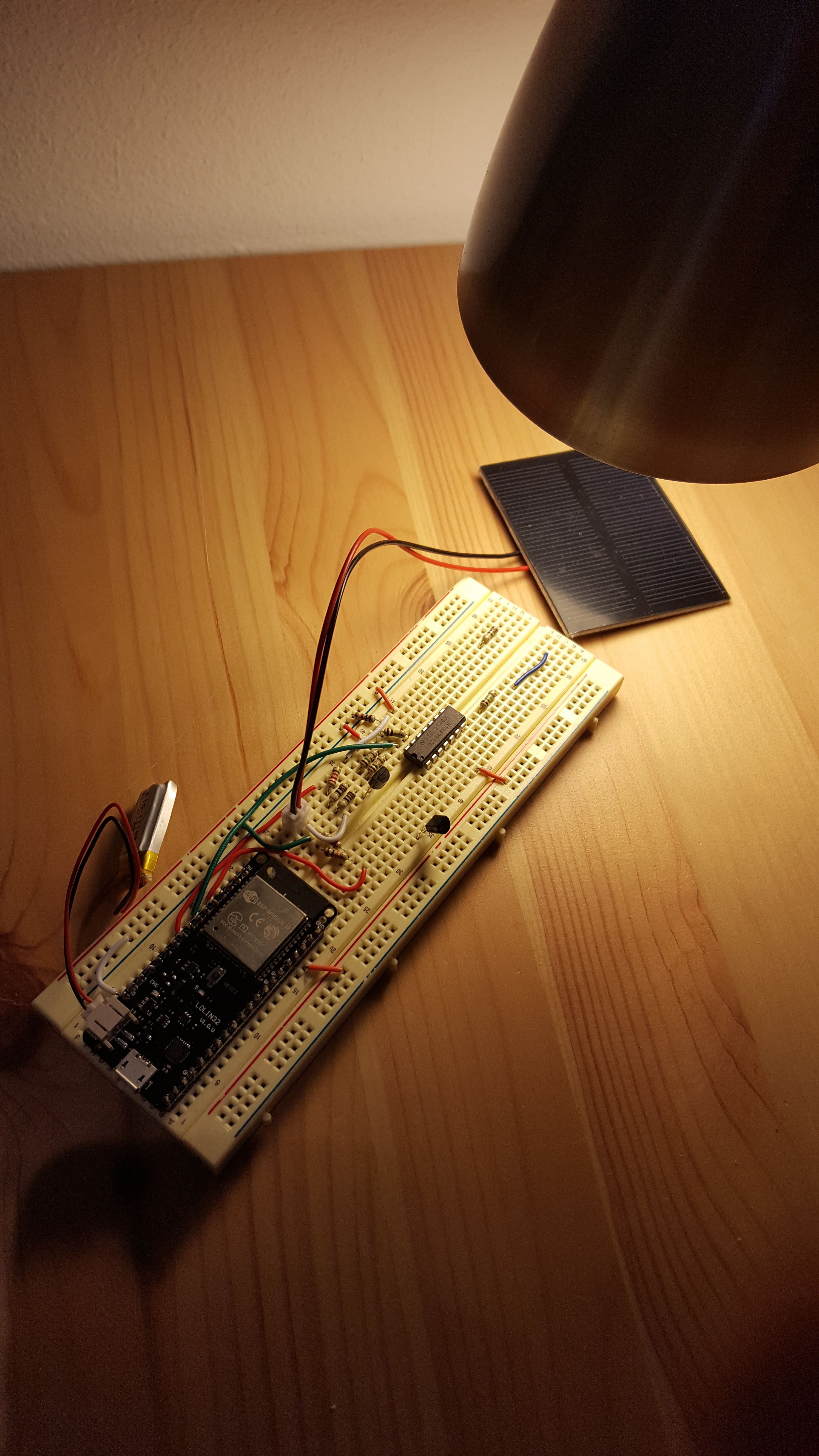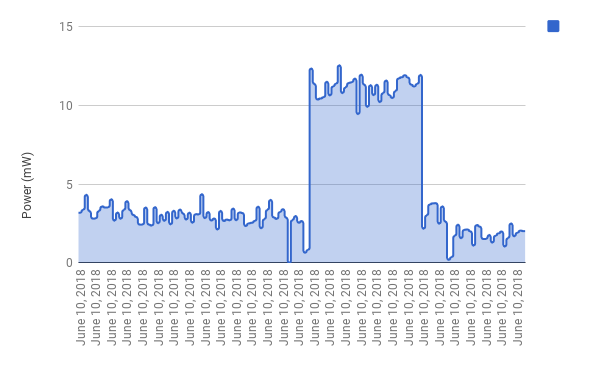There are a few global requirements for SOL, some obvious, some not:
- Ability to sense solar power intensity. This requirement is of course the whole point of the project, but there are numerous methods for doing this.
- Long-term use. The system must have low power consumption and/or solar recharging to allow the system to run for at least a year on its internal battery alone.
- Connectivity. The system must have wireless connectivity to easily allow the user to view data on solar intensity over time.
After some brainstorming, I determined a basic design for SOL. The system will have a small solar panel, to be used both as a battery charging source and a sensor. SOL will be a photovoltaic pyranometer. At each sampling interval, it will perform an impedance sweep on the solar panel to determine its maximum power point at that instance in time. Between sampling intervals, the solar panel will be connected to the charging circuit and the microcontroller in SOL will be in low power mode.
To perform the impedance sweep, a simple electronic load using a MOSFET in its linear region is used. A DAC provides the gate voltage sweep on the MOSFET, while two ADCs monitor voltage and current from the solar panel.
The ESP32 microcontroller was chosen for use due to its wifi/BLE connectivity, ULP modes, ADCs, DACs, and low cost. The ability to program it through the Arduino ecosystem also enables quick development.
The Seeed Technology 0.5w solar panel was chosen due to its adequate power in sunlight for charging the system, and low cost.
This solar panel has a maximum voltage of 8.2V. The rated maximum power point is at 5.5V and 100mA. Operating near this point is most critical for SOL. Solar intensity in low light can be many orders of magnitude lower than in direct sunlight, but accurate measurement in low light is not critical, since very little power is available.
For this solar panel, the voltage can be measured by the ESP32 ADC through a simple voltage divider. The current is measured as a voltage across a shunt resistor, amplified through a non-inverting amplifier.
I made a quick prototype with this setup, designed to send data every 10 minutes via WiFi through IFTTT to Google Sheets. The measured maximum power, maximum current, and maximum voltage were recorded. Testing was done with a desk lamp, at a variety of distances from the bulb to the solar panel.

The above image shows the prototype on a breadboard. The ESP32 module is running off of a 110mAh lithium polymer battery.

The above plot shows recorded power data for a few hours. This plot has three clear sections, corresponding to three physical setups in the relation between the lamp and the solar panel.
More to come...
Discussions
Become a Hackaday.io Member
Create an account to leave a comment. Already have an account? Log In.